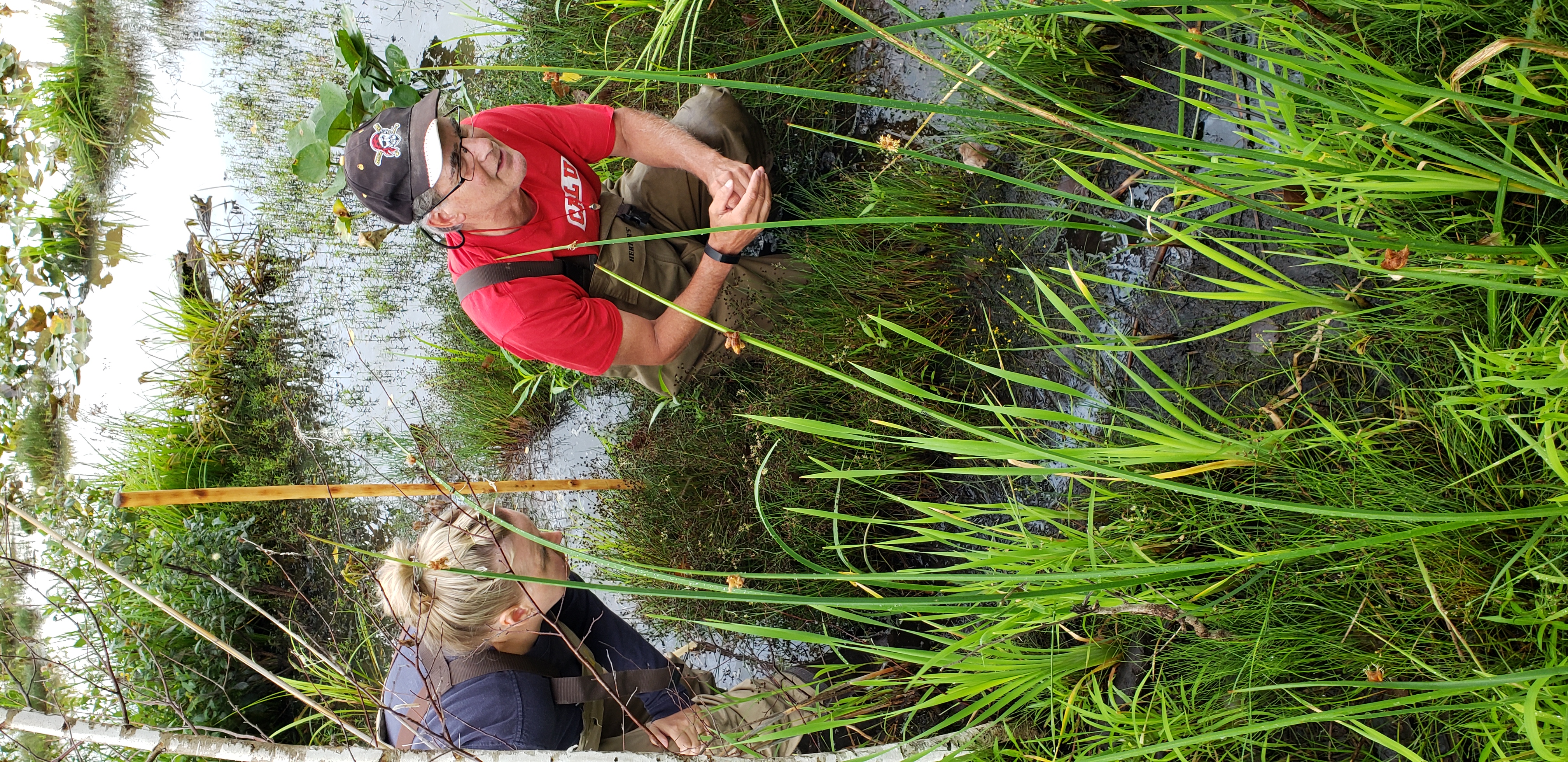Wetlands
What is a wetland?
Distinct ecosystems flooded by water, permanently or seasonally, where oxygen-free processes prevail. They are transition areas between the land and the water. They are characterized by the primary vegetation being aquatic plants and the presence of hydric soil that is is soil formed under long periods of saturation where anaerobic conditions develop.
Wetland Functions
- Filter out pollutants
- Coastal shoreline protection
- Flood protection
- Erosion prevention
- Protection/essential habitat for animals
- Groundwater replenishment
- Food production
- Recreation
Why are wetlands important?
- They are one of the most productive ecosystems in the world.
- Wetlands provide us with ecosystem services. These are benefits to humans provided by the natural environment and from healthy ecosystems. Ex: Texas wetlands are valued at $15 billion dollars per year of water quality, air quality, water supply, flood protection, and carbon sequestration benefits.
- They provide habitat for many different life forms and have high biotic diversity.
- Important roles in water cycle, nitrogen cycle, and carbon cycle.
- Act as a natural filter for pollutants and excessive nutrients.
- Help control water levels by providing water storage and reducing the rate of water flow.
How have wetlands been negatively impacted?
Restoration efforts:
- Only 1 million wetland acres remain in the United States (48 states).
- From 220 million acres estimated in the 1600s; 60,000 acres of wetlands are lost annually
- 1950s-1970s were a time period of great wetland loss
- Many wetlands that still exist are in poor condition.
- Many constructed wetlands fail to function and offer proper habitat like a natural wetland. These are typically created as a response to the destruction of a natural wetland. Ex: A building is being constructed at the location of a natural wetland so the wetland is “moved” to another location.
Threats to wetlands:
- Invasive plant species – Begin to grow in an area where they are not historically present and outcompete native species resulting in a monoculture of on invasive plant species rather than a diverse environment
- Results in a loss of habitat for native birds, animals, and plants and an overall loss in diversity.
- Pollution -Both chemical and physical
- Excessive nutrient levels from farms or houses
- Road salt
- Chemical or organic pollutants
- Litter
- Development – Results not only in the direct destruction of the habitat, but also changes the way water flows in an environment.
- Housing, shopping centers, dams
- Constructed wetlands
Wetland Restoration at Presque Isle State Park
Presque Isle State Park (PISP) contains wetlands classified as National Priority Wetlands by the National Wetlands Priority Conservation Plan. This distinction is given to wetlands that provide a high degree of public benefits, are representative of rare or declining wetland types within an ecoregion, and that are subject to identifiable threats of loss or degradation. PISP wetlands meet multiple areas if consideration for this designation including:
- Wildlife, including endangered and threatened species, migratory birds, and resident species;
- Commercial and sport fisheries;
- Surface and groundwater quality and quantity, and flood control;
- Outdoor recreation;
- Other areas or concerns which are considered appropriate. These areas include natural areas, education, research, scenic, archaeological, historical, and open space.
Threats to PISP wetlands:
- Invasive plants – phragmites, garlic mustard, narrow-leaf cattail, purple loosestrife, honeysuckle
- Pollution – excessive nutrient runoff, chemical pollution in the form of roadway and commercial runoff, and litter
A number of different organizations work together to restore Presque Isle State Park wetlands including the Pennsylvania Department of Conservation and Natural Resources, the Regional Science Consortium, Erie Bird Observatory, California University of Pennsylvania, and Go Native Erie. These organizations work together to remove invasive plant species, propagate native species, plant native species, and monitor the biology and diversity of wetland plants and animals.
The PA DCNR works to remove invasive species via a number of methods including backpack herbicide application, mechanical removal techniques, spot treatment, and aerial herbicide application via helicopter. Go Native Erie in conjunction with the Regional Science Consortium collects seeds and cuttings from native plants on PISP which are used to propagate additional native plants which are then installed into wetlands where invasives have been removed. Erie Bird Observatory collects data on bird species that utilize these wetlands including many endangered and migratory species. The Regional Science Consortium monitors the presence of fish, amphibian, mussel, and macroinvertebrate species present in the wetlands. Go Native Erie works with the California University of Pennsylvania to survey the plant species present across the wetlands. The monitoring of wetland plant and animal biology and diversity allows us to observe changes in wetland health over time and how successful our restoration efforts are.